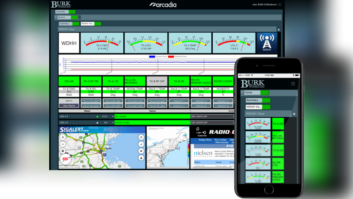Personal-area networks
Jun 1, 2007 12:00 PM, By Kevin McNamara, CNE

Most of us use a Personal Area Network (PAN) in our daily routines in front of our desktop and notebook PCs. PANs are technically defined as any network used to communicate with other slave devices located close to a master device. The most common PAN might be the connection between a PC and another device such as a printer or scanner.
PANs are not limited to devices wired to each other; they can also be created through a Wireless Personal Area Network (WPAN.) The most common WPAN technology is Bluetooth. Bluetooth is a common way to connect cell phones to wireless headsets. Many new automobile manufactures include Bluetooth technology in models to integrate cell phones, GPS or digital audio players. The nice thing about Bluetooth-enabled devices is the ease of connection: once the devices are properly configured, they will recognize each other and start communicating once they are in range. Other technologies that support PANs are Ultra-Wideband (UWB), Zigbee and a futuristic application using the human body to pass electrical information. These all have specific industrial applications. Let’s look at each of them.
Bluetooth
In 1994, two engineers from Ericsson developed the initial implementation of Bluetooth. The IEEE, under the designation of 802.15.1, subsequently standardized the specification in 1998.
Bluetooth uses the Industrial Scientific and Medical (ISM) band in the 2GHz spectrum. This band is used for a number of applications, including wireless Ethernet technologies such as Wi-fi, as well as many other scientific and medical devices. The rules for operating in this spectrum require that communication be spread over 79 1MHz channels to make more efficient use of the spectrum. Overall, the bandwidth of Bluetooth does not exceed 1Mb/s. There are two primary methods to achieve this spreading across the permitted bandwidth:
- Direct Sequence Spread Spectrum (DSSS). The power is spread across the available channels to achieve wide bandwidth and reduce power. DSSS might look familiar as it is typically used for 802.11x wireless Ethernet.
- Frequency Hopping Spread Spectrum (FHSS). The carrier is randomly sent on a (single) different channel. This method tends to be more secure due to the random nature of the hopping.
The power level of Bluetooth devices are typically limited to 1mW and yield a range of about 30 feet, however the specifications permit a power level up to a maximum of 100mW, which support communications in excess of 300 feet.
Bluetooth can also operate in either of two modes, circuit switched or packet switched, depending on the type of application for which it is used, i.e. voice or data. This flexibility allows the creation of a small complex network with other devices. As many as eight devices can be networked to form a piconet; additionally, as many as 10 piconets can be linked to form a scatternet.
A Bluetooth network is created by using a master device and as many as seven slave devices. The master polls all the active clients on the network sequentially. One characteristic that makes Bluetooth unique is that any host can become a client and vise versa.
Personal-area networks
Jun 1, 2007 12:00 PM, By Kevin McNamara, CNE
Ultra-wideband
UWB by definition is any RF technology that uses a bandwidth in excess of 500MHz or deviation greater than 25 percent of the center frequency. UWB technology was and continues to be used for impulse applications such as ground-penetrating radar and systems used by military and law enforcement to see behind walls. In the WPAN world, UWB forms the basis for the Wimedia specification.
While Wimedia is also intended to operate in a limited range, think of it as Bluetooth on steroids. Most notably it can operate legally in certain portions of the 3.1GHz to 10.6GHz range, permitting it to offer high bandwidths without the interference issues typical of the more crowded 2GHz spectrum. It is also compatible with current and emerging mobile telephony standards such as Wimax. Because of its ability to transfer data at speeds in excess of current Ethernet networks, but also support voice, video and data, Wimedia could ultimately replace Bluetooth.
Zigbee
Zigbee was born from a later addition to the 802.15 Bluetooth specification called 802.15.4, which created a specification for a low data rate, low power consumption and a more secure network device. In 2004, the Zigbee alliance, a group of over 100 companies, ratified the Zigbee 1.0 specification. While compatible with the former IEEE specification, it improves the functionality associated with applications such as industrial control systems, building/home automation and medical data collection.
Like Bluetooth, it operates in the ISM 2GHz band, but requires significantly less overhead in terms of software code requirements to create an application, hence a savings in power consumption and simpler implementation.
The Zigbee specification supports operation in one of three modes:
- Router works similar to traditional Ethernet routers providing connections based on source destination requirements of the respective devices.
- Zigbee Coordinator is required to form a Zigbee network. The coordinator could be viewed as similar to the Domain Name Server (DNS) in a large network, storing information about the other devices of the network.
- Zigbee End Device is the simplest device on a Zigbee network. It can only communicate to a coordinator or a router, however it can not pass data through. This is used where a simple, inexpensive point-to-point connection is all you need.
Other WPAN technologies
WPAN devices are not limited to various black-boxes. A German company called Ident Technologies has developed a technology called Skinplex, which permits the transmission of data using the human body as a medium. Basically, a person carries a device that uses his skin as the antenna. When he is in close proximity to a receiver, communications can be reliably achieved. One of the current applications for this technology is secure access to buildings, automobiles or other situations that require verification. The system operates at low data rates on a frequency of 195kHz. This is similar to the RFID systems found in most retail stores.
WPANs might present some interesting applications in a broadcast facility. Imagine a studio of WPAN-enabled devices where there are no wires, and where equipment could be moved from studio to studio without rewiring.
McNamara is president of Applied Wireless, Cape Coral, FL.












